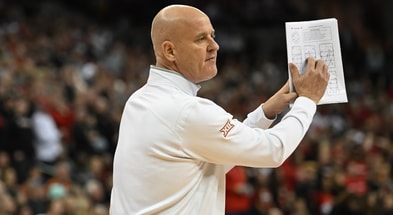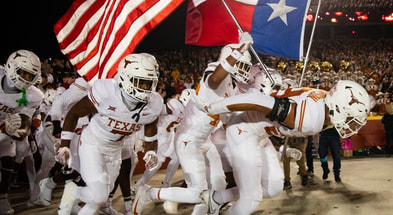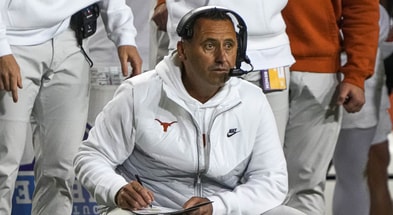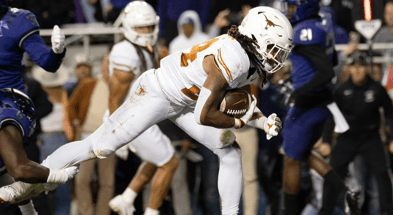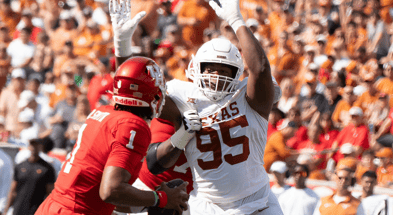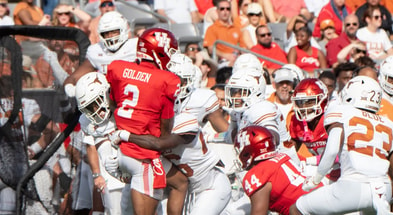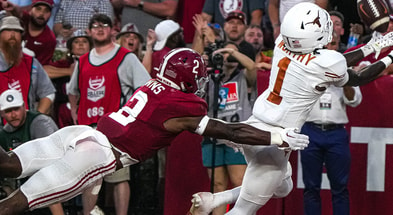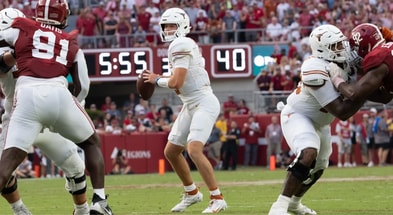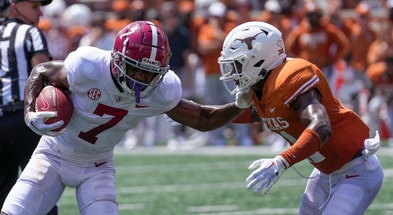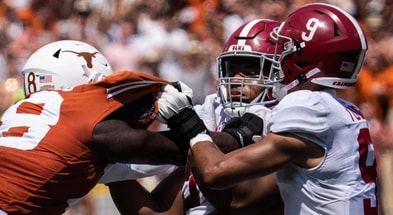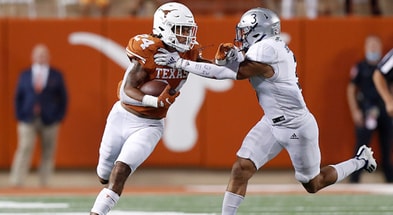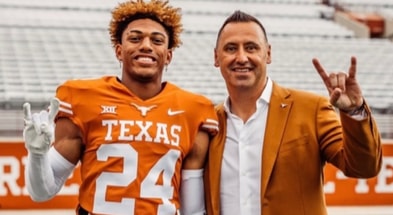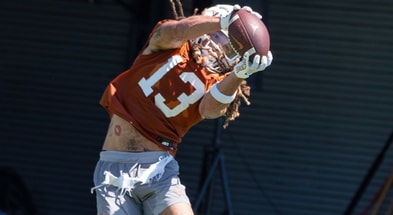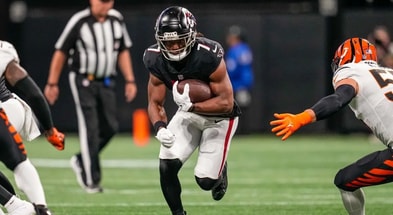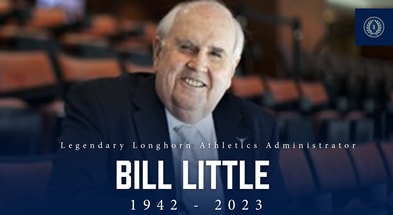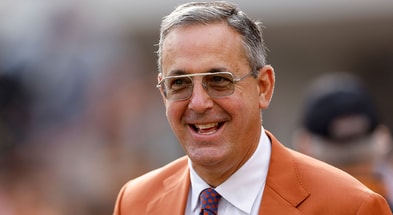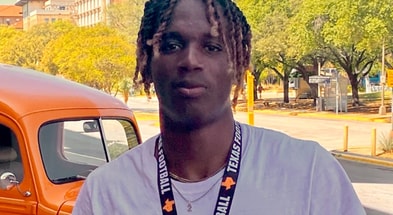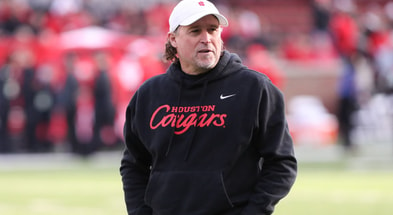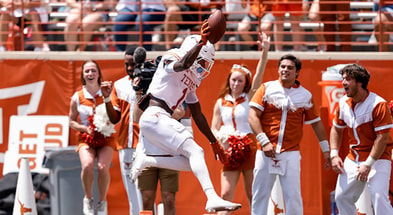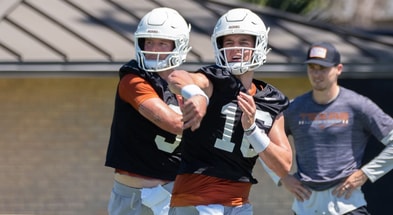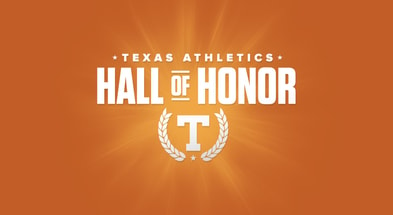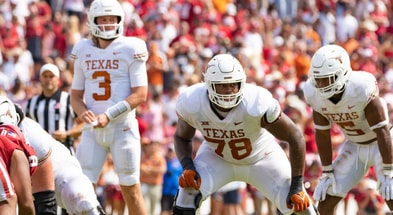Diagnosing the defensive disease
Chris Ash inherited a really tough situation in 2020.
Tom Herman was in a “Big 12 title or bust” season as a coach and his old colleague Chris Ash, was entrusted with converting a 3-down defense into a 4-down with a fundamentally poor back seven in a make or break year, during a pandemic. No better time to make wholesale adjustments than in a pressure-packed year with massive time constraints. What a terrible job.
He handled it about as well as could be expected. The Longhorns focused on loading up to stop the run and so long as the opponent couldn’t make them pay through the air, they were an okay defense.
Operating today with the knowledge of the Pete Kwiatkowski-guided counterfactual of 2021, it would be fascinating to see how Ash would have handled the challenges of this season. Here were some of the big ones:
-Caden Sterns, Joseph Ossai, Ta’Quon Graham, and Chris Brown all left. Pretty normal losses for a college team, but certainly those guys weren’t bad football players.
-The remaining back-up Edge was walk-on Jett Bush, who’d been pressed into service after playing inside linebacker previously.
-Juwan Mitchell, the closest thing Texas had to an experienced inside linebacker, quickly transferred out. The other inside linebacker DeMarvion Overshown, who hardly counted as an experienced inside backer after moving to the position from safety and without a full fall camp or any spring ball, missed much of the 2021 offseason as well with an injury.
Heading into the offseason one of my biggest questions about the defense was how they would structure the front, under any defensive coordinator, without a scholarship edge player? Could they find a good transfer? Make a position change? Recruit and start a freshman? After that, inside linebacker was also an obvious problem spot. The program was getting a badly needed restart.
Steve Sarkisian’s solutions
The first thing Steve Sarkisian did to address the Texas defense was to go add Ray Thornton through the transfer portal. As far as Joseph Ossai replacements go, not a perfect solution, but it certainly helped. Later he’d follow this up by adding Ovie Oghoufo and Ben Davis from other playoff programs.
Next was to hire multiple defensive staffers, including a pair of defensive back coaches in Notre Dame’s Terry Joseph and Ole Miss’ Blake Gideon.
“Who does he have in mind for the defensive coordinator job? Must be a linebacker coach?” So went the reasoning.
It’s not totally clear what happened here, but eventually they landed on Pete Kwiatkowski which definitely wasn’t the initial plan. After a plan to pair him with Mike Stoops as the inside linebackers’ coach was thwarted, PK was able to choose Montana State head coach Jeff Choate to help him try and turn one of the league’s worst linebacker corps into a 3-4 defense. If the results of this staff have appeared dysfunctional or poorly tied together, imagine what might have been had Stoops been in Choate’s role, molding the inside backers and communicating with the defense on the sideline.
From there, it was primarily going to be on the staff to work out solutions. Sarkisian is calling plays on offense so however involved he might be on defense, it was always going to come down to how well PK was able to coordinate the staff and roster he found waiting.
Pete Kwiatkowski’s new challenge
For nearly the entirety of his tenure as a coach, PK was under the highly detailed head coaching leadership of Chris Petersen. He worked with two different defensive back coaches over 11 years as a defensive coordinator under Petersen at Boise State and Washington, Marcel Yates (two years) and Jimmy Lake (nine years).
The majority of this period was spent playing Lake’s single-high coverages, which played well with the 2-4-5 defensive approach. The trick with the 2-4-5 and using true outside linebackers on the edges is when the offense uses a tight end. They can create an extra gap inside your two edges aren’t going to be fitting, so a defensive back has to get in on the action.
Which one? Well, this question can present either opportunities or challenges for a defense.
Here’s how the picture has looked for much of the season.
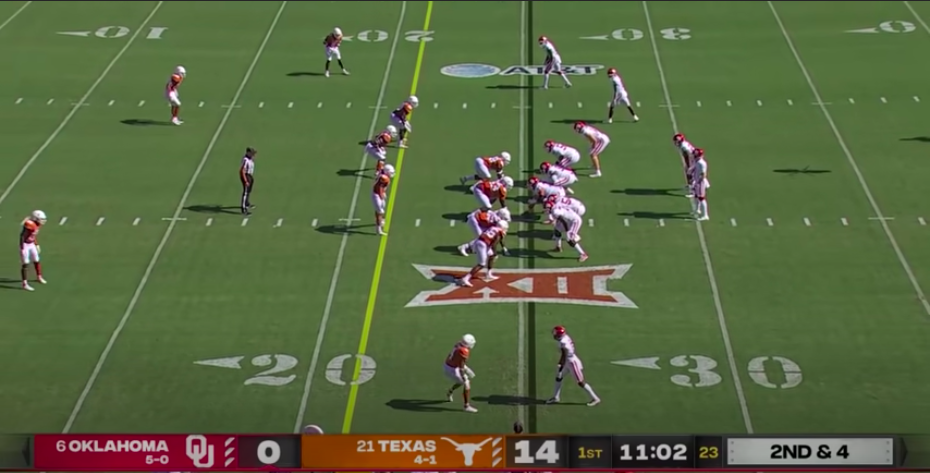
Texas is in the “tite” front, a modern favorite, with an Edge as the outside linebacker to the boundary and the Star (nickel) as the outside linebacker to the field. The Jack outside linebacker is playing as a true D-lineman across from the right tackle rather than playing contain in the 2-4-5. Texas has mixed in the 2-4-5 fairly often but the 3-down structures have been much more common because the lack of edge players on the roster and the talent of sophomore Alfred Collins necessitated he play Jack. They’ve used him mostly as a 4i-technique or a 5-technique defensive end.
The Star ends up serving a lot in run support from outside contain, but he first has to mind the quick inside pass option from the slot, the quick outside pass is more or less conceded but field cornerback does have eyes to close on it.
The inside linebackers need to read keys and fit the appropriate inside gaps, and the “Buck” (boundary outside linebacker) is containing outside-in from the short side. The safeties? They’ve spent most of the season backpedaling every snap and keeping the ball in front of them with the strong safety in the boundary occasionally playing flat-footed from around 10 yards depth.
For comparison’s sake, here’s how things tended to look at Washington.
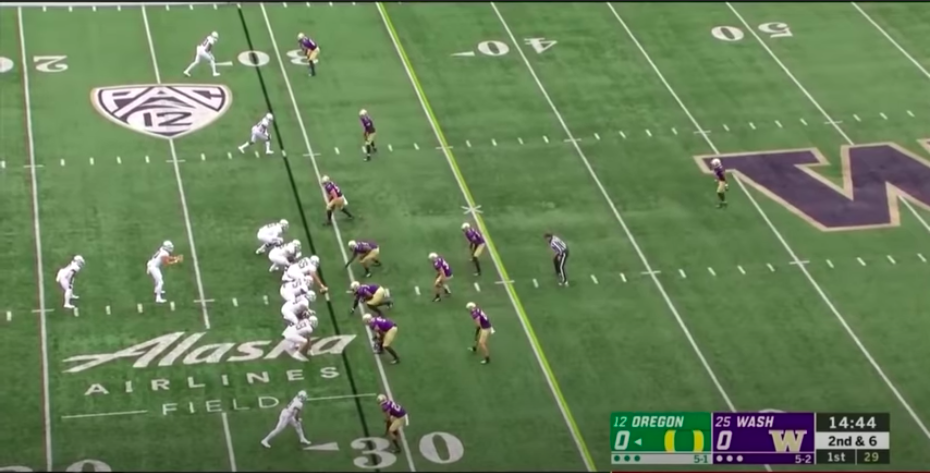
There was less coverage disguise, the Huskies were more consistent about walking down a safety to create an overhang to either side of the formation and then had a deep safety backpedaling from 15-yards deep at the hint of a pass. The field slot from Oregon has the nickel across from him, the tight end to the boundary has the strong safety walked down over him.
Terry Joseph and Blake Gideon came from very different defensive backgrounds than Jimmy Lake. Gideon played and coached for Will Muschamp for nearly all of his early college football experiences, and they would play in a two-high shell before either staying there or rotating into a single-high coverage. Joseph, who actually coordinates the back end of the 2021 Longhorn defense, generally had the Irish starting and ending in a two-high shell.
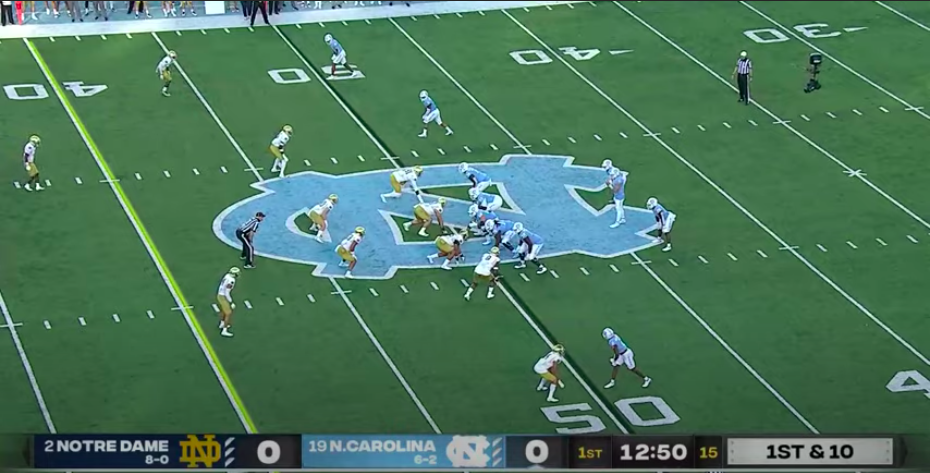
Look more familiar? This is how Texas has spent most of 2021. Against Kansas last Saturday they finally came a lot closer to mirroring Notre Dame’s safety depth with Brenden Schooler and Jerrin Thompson/B.J. Foster playing a little tighter and not backpedaling at the snap.
What killed the Longhorns against Kansas was a series of assignment errors and contain issues. For instance, Kansas’ basic outside zone runs…
In the first example, Texas is late to recognize what’s happening and they don’t restrict the pathway of the run at all. They’re also playing a technique at end which requires a fast fill by the middle linebacker to the edge, but instead he slow plays it and is caught by the tackle. The edge-setting from the outside linebacker does him no favors and there’s a huge crease in the running back’s natural path.
The second example is a good example of how Texas has struggled to master the late safety spins inherent in the Muschamp system. When you rotate late you’d really better be playing on a string as a unit because your safeties’ initial steps are first to find the correct position. In this instance the late nickel blitz is awful in contain, the middle linebacker is once more caught by the tackle, and you have the easiest stretch run in history… again.
This is why the staff have clearly been terrified at the prospect of playing the D-line more aggressively and risking the chance of blockers making it to the linebackers. The linebackers aren’t decisive enough to make plays when they have to deal with blockers and most of them, the two starters in particular, aren’t particularly good at playing blocks. On both of these runs you can see Texas D-linemen shooting through gaps on the backside but it amounting to nothing. The late spinning safeties are of no use either.
Texas’ play against the play-action off the stretch runs was even worse. Kansas routinely had receivers running open in the red zone on play-action, including on the fateful two-point conversion.
Obviously Texas isn’t playing well as a defensive unit. There’s a lot of different philosophies at work and they have yet to be combined into a coherent whole. The lack of good, experienced off ball or edge linebackers has frustrated any efforts to properly channel runs into the right lanes, Consequently, the D-line has to do more of the heavy lifting in terms of directing runs, which prevents an athletic and talented unit from being more aggressive. Meanwhile the secondary is playing a lot of bend don’t break tactics with hesitation and lack of precision, which usually keeps them from arriving in time to help manage the load up front or clean up errors.
By the way, as a multiple front defense the Longhorns are routinely altering who has help and from where when it comes to stopping the run. Washington’s simplicity in the defensive backfield was very clearly beneficial when it came to blending with PK’s multiple fronts. The Husky front could mix up different looks and stunts all day and the secondary had simple, consistent rules to ensure they’d be there to help make it right. Texas’ safeties and linebackers have been as apt to make the front wrong as to make it right.
The three leading tacklers for this team are DeMarvion Overshown, Luke Brockermeyer, and Jaylan Ford. None have been great but they’ve had to carry the unit.
The main outside linebackers Ovie Oghoufo and Ray Thornton have combined for nine total tackles for loss and three sacks, fewer than a single outside linebacker would generally yield in the Washington defense.
D’Shawn Jamison and Josh Thompson have combined this season for two interceptions and three pass break-ups, roughly as many as a single Notre Dame cornerback under Joseph in a given year. It’s a similar story with the safeties, although B.J. Foster has managed three picks.
There’s not really any manner in which the Texas defense applies pressure on offenses between the slow-reacting defensive fronts and backed-up coverages. They’ve been aiming pretty high on both ends and you don’t fall among the clouds when you aim for the stars on defense in the Big 12… it’s the end zone turf which breaks your fall.
What’s next for Texas on defense?
Everything starts with Sark, who has to make judgments about why the defense has been bad and then decisions regarding who should be tasked with the repairs. Does he lean on PK’s long-standing resume of excellence before Texas and try to empower his defensive coordinator to reshape the defensive staff and roster? Keep his earlier hires and oust PK for a new coordinator and linebacker coach who pair more easily with Joseph and Gideon? Or does he burn it all down like Dave Aranda did after Baylor’s awful year on offense in 2020, removing both factions and starting over with a mostly new staff tightly aligned on the direction for the system?
Kwiatkowski built his career on teaching excellent reactions up front and working with defensive back coaches who taught great reactions on the back end. Boise State made a big pivot from Justin Wilcox to Kwiatkowski in moving from emphasizing really savvy play-calling (Wilcox) to a system in which the defenders would have agency and freedom to make plays. Obviously only two years removed from Orlando’s battleship defensive system (Mike linebacker to C-gap!) with a pandemic as the canal didn’t set up Texas to make a smooth transition. Nor has the apparent lack of congruence between the defensive backfield and the front.
If Sark keeps the current staff mostly intact, could they work out how to better integrate Joseph’s quarters coverages, Gideon’s disguises, and Kwiatkowski’s multiple fronts? If Sark had his druthers, would he prefer to lean more into PK’s Match 3 schemes from Washington and rely on simplicity on the back end? Or does he want to maintain Joseph and Gideon’s two-high shells? A change in either direction likely means major teaching and overhauls this offseason, which could further delay Texas’ improvements.
After they work out all of those big picture details, then they have to retool this roster. Kwiatkowski and Bo Davis have done a ton of work to remake the front via traditional recruiting. Of the 22 current commits in the class, eight project to play as defensive tackles or the Edge positions. They may add another Edge through the portal and also need to see if Moro Ojomo returns for another year, if he does they will need to build more intentionally around Alfred Collins as a 3-4 defensive end. If not, they’ll need to get Collins playing defensive tackle at a high level in his stead.
Linebacker will also need some major attention and likely through the transfer portal. Overshown is probably off to the NFL and the trio of Brockermeyer, Ford, and David Gbenda don’t appear to be just an offseason away from providing dominant linebacker play. There’s also team captain, offensive back-up, and linebacker-sized Roschon Johnson to consider in their plans for a defensive rebuild.
There are a lot of moving pieces which Sark clearly failed to mesh together in his first offseason. As it goes for so many offensive-minded head coaches, the coming weeks will test his ability to manage the staff on the other side of the ball in a fashion which will allow for a big leap in 2022. Texas’ chances of a competitive season in the Big 12 and potentially his job depend on these adjustments and judgment calls over the coming weeks.
